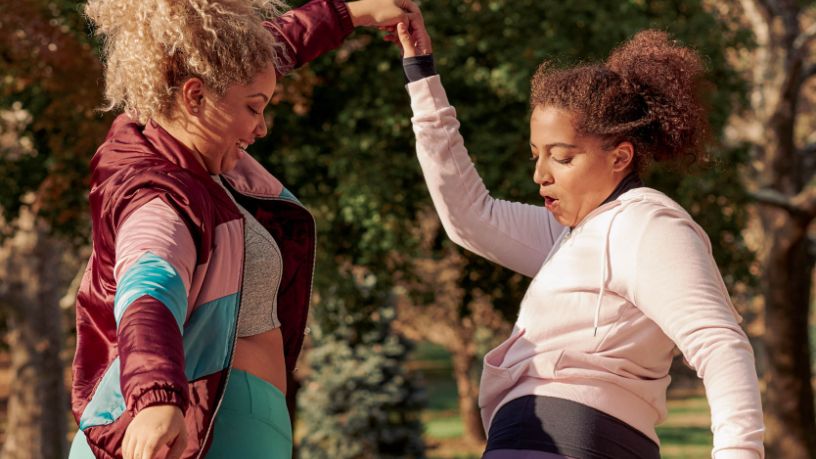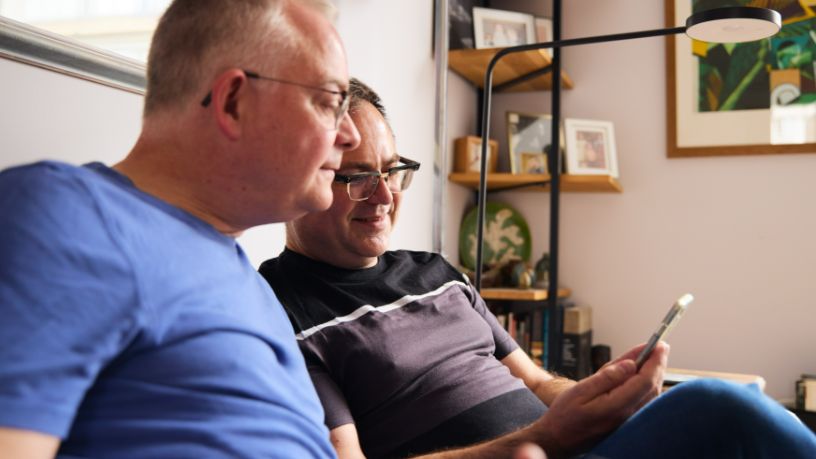A pre-diabetes diagnosis is an opportunity to prevent the development of type 2 diabetes.
On this page
Key takeaways
Pre-diabetes can be reversed by losing excess weight, staying active and eating a healthy, balanced diet.
Small changes can lead to big progress, and you can get your health on track.
If you have pre-diabetes, you may be feeling shocked or even frightened by the diagnosis. But, it’s not all bad news. The truth is, you’ve been given a chance many people don’t get.
Because there are no symptoms, you can live with pre-diabetes without knowing it and, over time, it can develop into type 2 diabetes.
Pre-diabetes is reversible with lifestyle changes.1 But becoming aware of the condition is the crucial step to making that happen.
What is pre-diabetes?
Around 2 million Australians have pre-diabetes, a condition that occurs when your blood glucose levels (BGLs) are too high, but not high enough to be diabetes.2
Don’t let the ‘pre’ in the name fool you. Pre-diabetes is a serious condition that needs to be addressed. Without making lifestyle changes, you have a higher risk of developing type 2 diabetes, cardiovascular disease and stroke.1
Type 2 diabetes carries a range of health risks, including:
- heart and blood vessel disease
- nerve damage
- kidney disease
- eye damage.3
Signs and symptoms of pre-diabetes
Most people with pre-diabetes have no symptoms. But, occasionally, there are signs.
For instance, you might develop darkened skin on some areas on your body, a condition known as acanthosis nigricans. This can affect several areas of your body, including your neck, armpits, knees or knuckles.4
Some red flags that your pre-diabetes has progressed into type 2 diabetes include:
- increased thirst
- frequent urination
- fatigue
- blurred vision.5
Risk factors for pre-diabetes
You’re more at risk of developing pre-diabetes if you:
- are overweight (particularly around the waist)
- have a family history of type 2 diabetes
- have or had gestational diabetes
- have polycystic ovary syndrome
- smoke
- have high blood pressure or cholesterol
- lead an inactive lifestyle
- take certain antipsychotic medications
- are of Aboriginal or Torres Strait Islander, Pacific Islander, south or southeast Asian, Middle Eastern or north African background.1
Preventing, managing and reversing pre-diabetes
If you’re worried you may have any type of diabetes, including pre-diabetes, visit your doctor and have your BGLs checked.
The good news is that, while you can’t control all of the risk factors for pre-diabetes, making healthy lifestyle choices can help bring your BGLs back into a healthy range.
To do this, you can:
Lose weight
If you are overweight, shedding just 5 to 7% of your body weight can help reverse pre-diabetes and reduce your risk of developing type 2 diabetes.6
The key to keeping your weight in a healthy range is to eat a balanced diet and make exercise a part of your daily life.
Eat better
According to Australian guidelines for healthy eating, you should try to eat a variety of nutritious foods every day, with a balance of fruit, vegetables, wholegrains, lean protein and dairy (or alternatives).7
Aim to eat foods that are low in saturated fat, salt and added sugar and high in things like fibre. When it comes to carbohydrates, go for low-GI options (which help you stay fuller for longer).8
Be more active
Regular exercise is one of the best things you can do for your health. Not only does it help you lose weight, it can also improve how well you respond to insulin.
Diabetes Australia recommends doing 30 minutes of moderate intensity exercise every day, enough to have you lightly puffing. That could be anything, from a game of tennis to a brisk walk through the neighbourhood.9
Bupa Health Programs
Discover our programs designed to help you recover and stay out of hospital where you can.
Adjust other lifestyle factors
Quitting smoking can help you manage your BGLs.10 Moreover, Australian guidelines recommend drinking no more than 4 standard drinks a day or 10 drinks in one week.11
Changing your lifestyle and habits can be overwhelming, and it doesn’t happen overnight. Making small, ongoing adjustments can lead to long-term, sustainable change, and help prevent your risk of diabetes.
Resources
Diabetes Australia offers resources on preventing and living with diabetes. Visit their website or call them on 1800 177 055.

At Bupa, trust is everything
Our health and wellbeing information is regularly reviewed and maintained by a team of healthcare experts, to ensure its relevancy and accuracy. Everyone's health journey is unique and health outcomes vary from person to person.
This content is not a replacement for personalised and specific medical, healthcare, or other professional advice. If you have concerns about your health, see your doctor or other health professional.
1Better Health Channel. (2021). Diabetes - pre-diabetes. Victoria State Government, Department of Health.
2Diabetes Australia. (2024). Pre-diabetes. Diabetes Australia.
3Mayo Clinic. (2023). Type 2 Diabetes. Mayo Clinic.
4Mayo Clinic. (2022). Acanthosis nigricans. Mayo Clinic.
5Better Health Channel. (2022). Diabetes type 2. Victoria State Government, Department of Health.
6Goodman, E. (2021). Naturally reversing prediabetes: What to know. Medical News Today.
7Australian Government, National Health and Medical Research Council. (2024). Australian guide to healthy eating. Australian Government, Department of Health and Aging.
8Better Health Channel. (2024). Carbohydrates and the glycaemic index. Victoria State Government, Department of Health.
9Diabetes Australia. (2024). Exercise & diabetes. Diabetes Australia.
10Centers for Disease Control and Prevention (CDC). (2023). Smoking and Diabetes. U.S. Department of Health & Human Services.
11Australian Government, Department of Health and Aged Care. (2022). How much alcohol is safe to drink?. Australian Government.
You might also like...
5 ways to reduce your risk of type 2 diabetes
Type 2 diabetes runs serious health risks. But, with the right lifestyle changes, you can manage the condition or even prevent your chances of developing it.
Diabetes 101: What are the different types?
Understanding the different types of diabetes is an important step in learning how to manage your health and preventing serious issues in the future.
Gestational diabetes: A guide
Gestational diabetes affects around one in 6 pregnant people in Australia. Find out your risk.
8 diabetes myths debunked
Diabetes can be complex, so naturally there are a lot of myths floating around about how you get it, treat it and ‘cure’ it. But what’s the truth?





